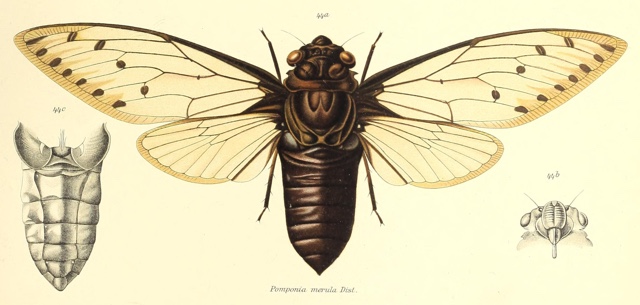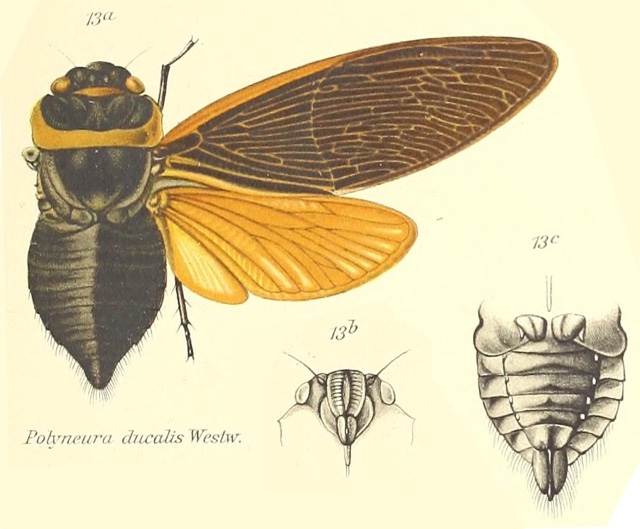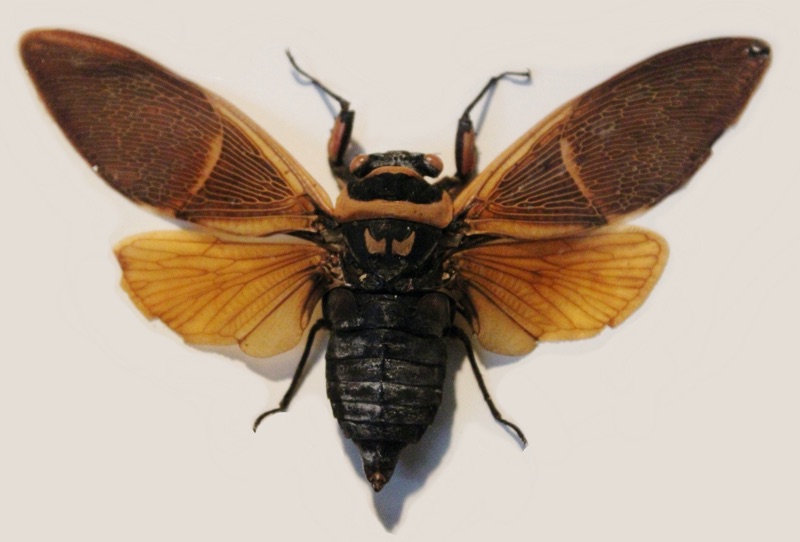Cosmopsaltria capitata Distant, 1888 is found in Paupa (Indonesia).
Its name changed from Fatima capitata to Cosmopsaltria capitata probably when the Fatima Distant, 1905 genus was merged into the Cosmopsaltria Stål, 1866 genus.
Scientific classification:
Family: Cicadidae
Subfamily: Cicadinae
Tribe: Cosmopsaltriini
SubTribe: Cosmopsaltriaria
Genus: Cosmopsaltria
Species: Cosmopsaltria capitata Distant, 1888
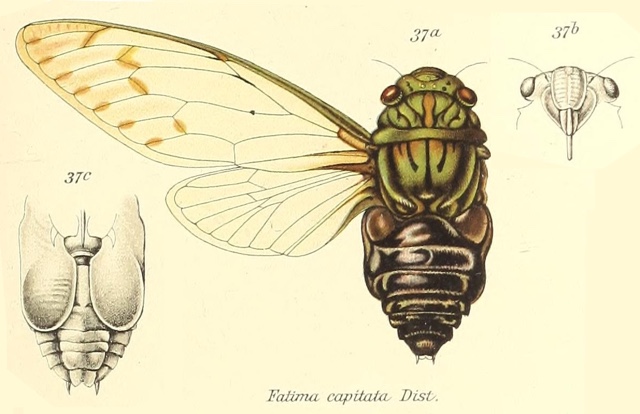
The image says Fatima capitata, but the newest name of this cicada is Cosmopsaltria capitata.
Have fun comparing the Fatima genus description…
Characters. — Head (including eyes) about equal in breadth to base of mesonotum, as long as breadth between eyes, its lateral margins very irregular, the anterior lateral margins of the vertex being almost at right angles to the face; pronotum little more than half the length of mesonotum ; abdomen above as long as space between apex of head and base of cruciform elevation ; anal abdominal segment in male apically acutely dentate on each side; tympana covered, the tympanal coverings in male projecting a little beyond the lateral abdominal margins; rostrum passing the posterior coxae ; opercula in male broad, just or longly passing the middle of the abdomen, either concavely sinuate on each side or slightly and obsoletely sinuate, their apices rounded or obliquely truncate; tegmina and wings subhyaline, the first broad, their greatest breadth more than one third of their length.
… to the Cosmopsaltria genus description by W. L. Distant in Genera Insectorum, 1913:
Characters. — Body moderately long and robust, head as long as breadth between eyes, and including eyes as wide as base of mesonotum, with the front not twice as broad at base as anterior margins of the lobes of vertex, lateral margins obliquely continuous to front or very slightly sinuate; pronotum about as long as head, its lateral margins scarcely ampliated, but distinctly toothed or angulated; mesonotum slightly longer than pronotum ; abdomen short, about as long as space between apex of head and base of cruciform elevation; tympana covered; opercula in male broad, either just or longly passing middle of abdomen, well separated and not overlapping, more or less concavely sinuate on each side at basal areas, their apices rounded or obliquely truncate; rostrum reaching, sometimes passing, the posterior coxae; tegmina and wings hyaline; greatest breadth of tegmina about a third of length, venation normal, basal cell much longer than broad.
References:
- The illustration and genus description comes from the journal Genera Insectorum, and a specific article from 1913 by W. L. Distant titled Homoptera. Fam. Cicadidae, Subfam, Cicadinae. Read it on the Biodiversity Heritage Library website.
- Current species name verified using Allen Sanborn’s Catalogue of the Cicadoidea (Hemiptera: Auchenorrhyncha).
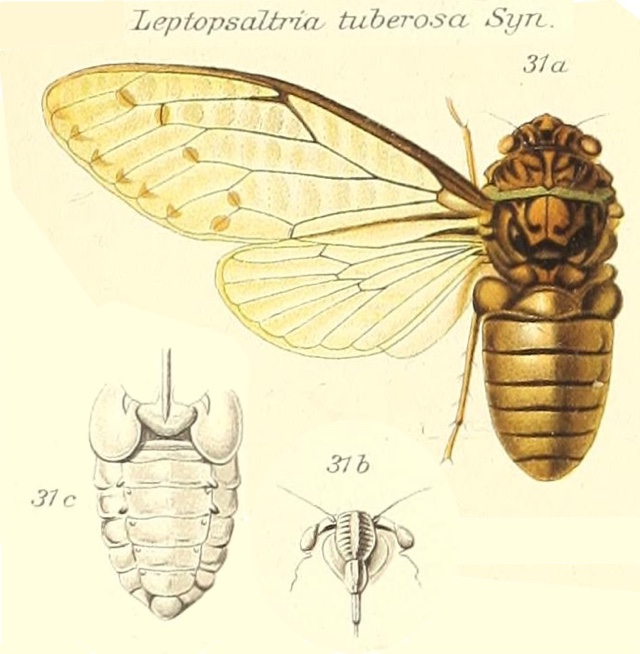
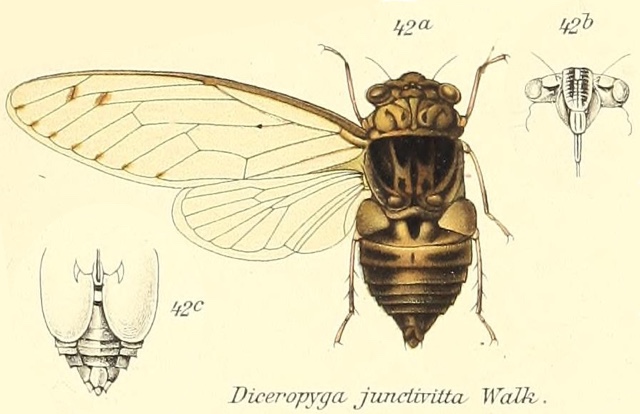
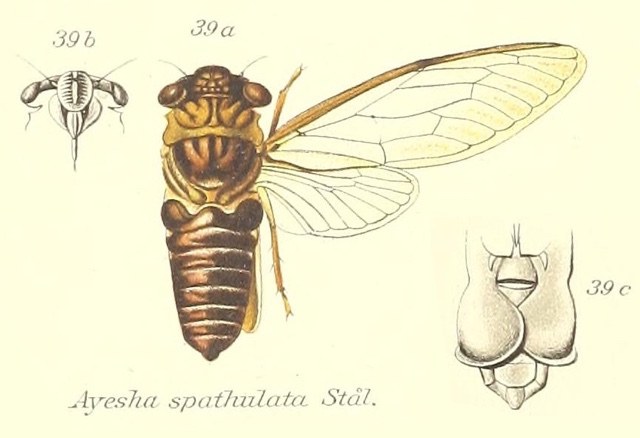
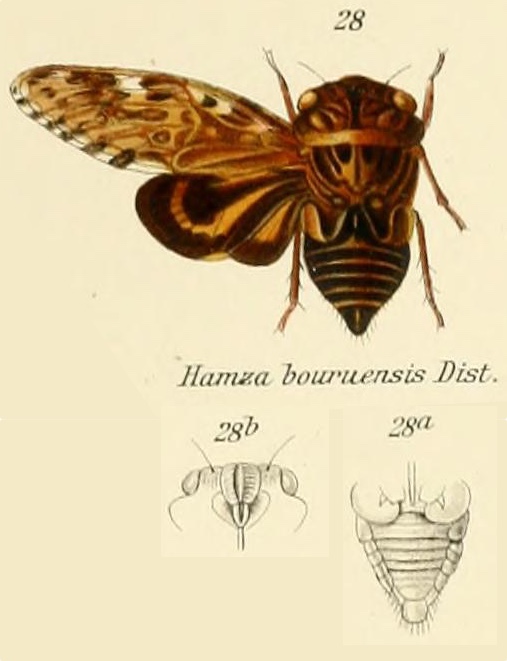
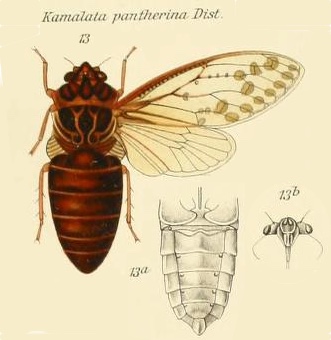
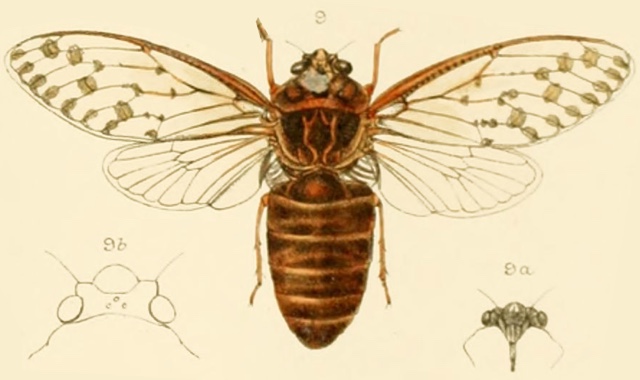
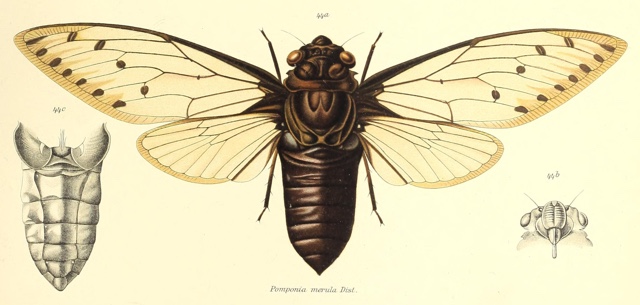
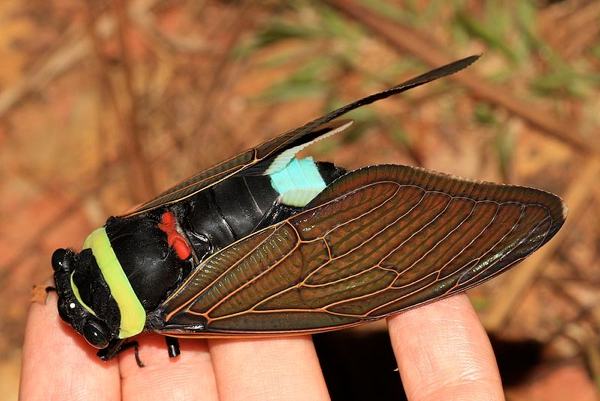
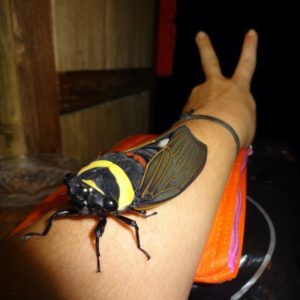
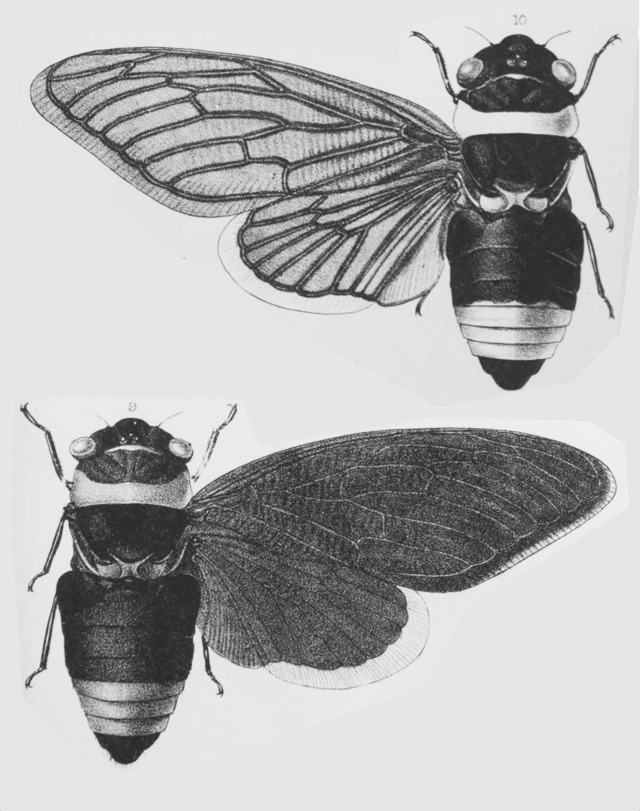
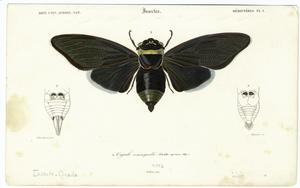
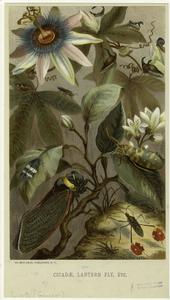
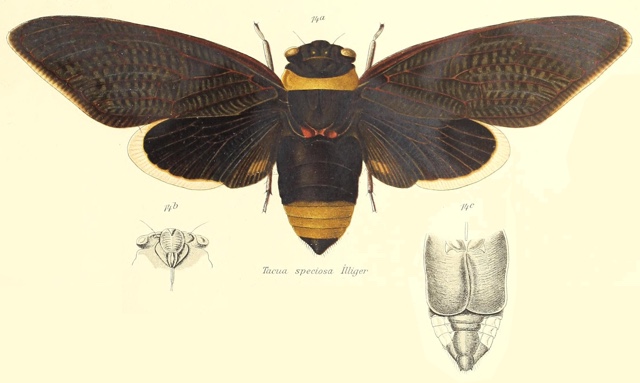
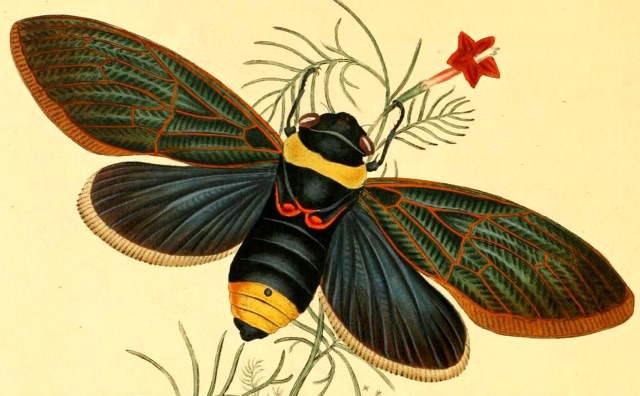 . Note that one of its older names was Cicada indica!
. Note that one of its older names was Cicada indica!